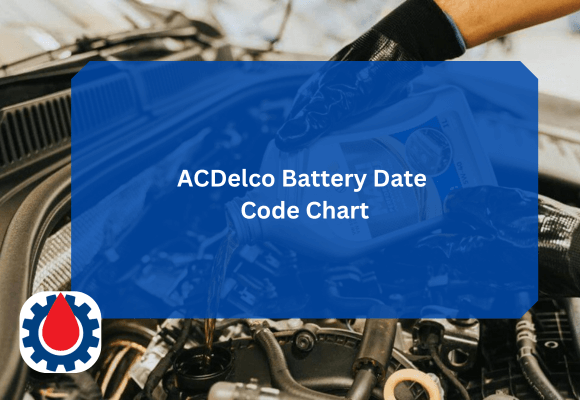This post explores the causes, symptoms, diagnosis, and solutions for an engine oil pressure control circuit stuck on, providing a comprehensive guide for vehicle owners and automotive enthusiasts.
Engine Oil Pressure Control Circuit Stuck On
Causes of the Issue
1. Faulty Oil Pressure Sensor: The sensor may send incorrect high-pressure signals to the ECU, causing the circuit to remain active.
2. Malfunctioning Oil Pressure Solenoid: A stuck or failed solenoid can prevent the system from adjusting oil pressure, keeping it in a high-pressure state.
3. Wiring Issues: Damaged or shorted wiring in the circuit can lead to constant signaling, mimicking a “stuck on” condition.
4. ECU Software Glitch: Corrupted or outdated ECU firmware may misinterpret sensor data, leading to improper control of the oil pump or solenoid.
5. Clogged Oil Passages: Debris or sludge in the oil passages can restrict flow, causing the system to overcompensate and remain on.
6. Low or Contaminated Oil: Insufficient or degraded engine oil can affect pressure regulation, triggering the circuit to stay active.
Related Low Engine Oil Pressure(8 Common Causes & Solutions)
Symptoms of a Stuck Engine Oil Pressure Control Circuit
1. Check Engine Light (CEL): The ECU often detects irregularities in the oil pressure circuit and triggers the CEL, accompanied by diagnostic trouble codes (DTCs) like P0522 (low oil pressure sensor voltage) or P06DA (oil pressure control circuit performance).
2. Erratic Oil Pressure Readings: Gauges may show consistently high or fluctuating oil pressure, even when the engine is idling or under normal load.
3. Reduced Engine Performance: Improper oil pressure can affect variable valve timing (VVT) systems, leading to sluggish acceleration or reduced power.
4. Engine Noise: Inadequate lubrication due to improper pressure regulation may cause ticking, knocking, or grinding noises from the engine.
5. Overheating: Inefficient oil circulation can lead to increased friction and heat, potentially causing the engine to overheat.
6. Poor Fuel Economy: A malfunctioning circuit may force the engine to work harder, increasing fuel consumption.
If you notice any of these symptoms, addressing the issue promptly is crucial to avoid further damage.
Related Normal Oil Pressure for Diesel Engines(Norma Pressure Range)
Diagnosing the Problem
Accurate diagnosis is essential to pinpoint the root cause. Here’s a step-by-step approach:
1. Scan for DTCs: Use an OBD-II scanner to retrieve trouble codes. Codes like P06DA or P0523 (high oil pressure sensor voltage) can indicate a stuck circuit.
2. Check Oil Levels and Condition: Ensure the engine oil is at the correct level and free from contamination. Dirty or low oil can affect pressure readings.
3. Inspect the Oil Pressure Sensor: Test the sensor with a multimeter to verify it’s sending accurate voltage signals. Replace if faulty.
4. Test the Solenoid: Check the variable oil pressure solenoid for proper operation. A stuck solenoid may need cleaning or replacement.
5. Examine Wiring and Connectors: Look for damaged wires, loose connections, or corrosion in the circuit. Repair or replace as needed.
5. Manual Oil Pressure Test: Use a mechanical oil pressure gauge to measure actual oil pressure and compare it with the sensor’s readings.
6. ECU Diagnostics: If all components check out, the issue may lie with the ECU. Consult a professional to test and, if necessary, reflash or replace the ECU.
Related Is Oil Pressure Higher When Cold(Is Your Engine at Risk?)
Solutions and Repairs
Once diagnosed, addressing the issue depends on the cause:
1. Replace Faulty Components: Swap out a defective oil pressure sensor or solenoid with OEM or high-quality aftermarket parts.
2. Repair Wiring Issues: Fix or replace damaged wires and ensure secure connections to restore proper circuit function.
3. Oil Change and System Flush: If contaminated oil or sludge is the culprit, perform a full oil change and flush the system to clear blockages.
4. ECU Update or Replacement: For software-related issues, update the ECU firmware. In rare cases, ECU replacement may be necessary.
5. Regular Maintenance: Prevent future issues by following the manufacturer’s oil change intervals and using the recommended oil type.
Related Engine Oil Cooler Lines Leaking(5 Causes + Solutions)
Preventive Measures
To avoid recurrence, consider these tips:
- Use High-Quality Oil: Always use the manufacturer-specified oil grade to ensure proper viscosity and lubrication.
- Stick to Maintenance Schedules: Regular oil changes and inspections can prevent sludge buildup and component wear.
- Monitor Warning Signs: Pay attention to dashboard warnings and unusual engine behavior to catch issues early.
- Professional Inspections: Have your vehicle inspected by a qualified mechanic annually or when symptoms arise.
Related Best Pipe Thread Sealant for Fuel Oil Applications(Top 5 Picks 2025)
What is the Engine Oil Pressure Control Circuit?
The engine oil pressure control circuit is part of the vehicle’s engine management system, responsible for regulating oil pressure to ensure optimal lubrication.
It typically includes components like the oil pressure sensor, oil pump, variable oil pressure solenoid, and the engine control unit (ECU). The ECU monitors oil pressure via the sensor and adjusts the solenoid to maintain the correct pressure based on driving conditions, engine load, and temperature.
When the circuit is “stuck on,” it means the system is continuously signaling high oil pressure or failing to adjust pressure appropriately. This can result from electrical, mechanical, or software issues, each requiring specific diagnostic and repair approaches.
Final words
A stuck engine oil pressure control circuit is a serious issue that can compromise engine performance and longevity. By understanding the symptoms, causes, and diagnostic steps, vehicle owners can take proactive measures to address the problem.
Whether it’s a faulty sensor, wiring issue, or ECU glitch, timely repairs and regular maintenance are key to keeping your engine running smoothly. If you’re unsure about diagnosing or fixing the issue, consult a professional mechanic to ensure accurate repairs and prevent further damage.




